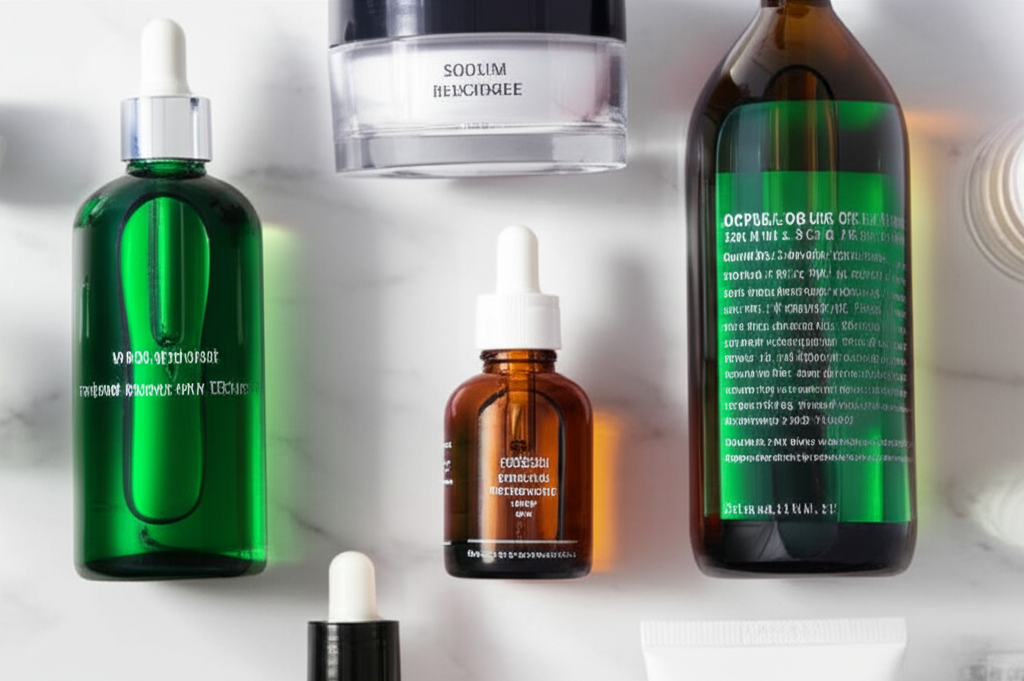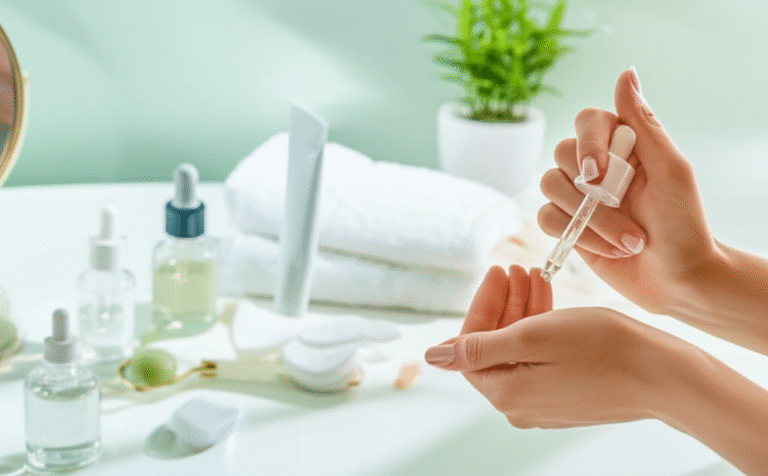Sodium Benzoate in Skin Care acts as a crucial preservative, preventing microbial growth to keep products safe and effective. It also boasts antioxidant properties, helping to protect skin from damage and maintain product integrity for a healthy glow.
Ever picked up a skincare product and wondered about that long ingredient name you can’t quite pronounce? We’ve all been there! Sometimes, ingredients like sodium benzoate can sound a bit intimidating, leaving you wondering if they’re really good for your skin. But don’t worry, beautiful! Understanding what’s in your favorite creams and serums is the first step to unlocking truly healthy, glowing skin. So, let’s dive into the super useful world of sodium benzoate in skincare, breaking down exactly why it’s a star player often hidden in plain sight.
What Exactly is Sodium Benzoate?

Think of sodium benzoate as your skincare product’s trusty bodyguard. It’s a salt of benzoic acid, a naturally occurring compound found in many fruits like cranberries and apples, as well as in cinnamon and cloves. In the world of cosmetics and personal care products, it’s primarily used as a preservative.
Its main job? To stop nasty things like bacteria, yeast, and mold from growing in your skincare. Without good preservatives, these microorganisms could spoil your products, making them ineffective or even harmful to use. This is super important because we want our serums and moisturizers to be as safe and beneficial as possible!
The Essential Role of Preservatives in Skincare
Before we get too deep into sodium benzoate, let’s quickly chat about why preservatives, in general, are non-negotiable in skincare. Imagine a delicious fruit salad left out on the counter – it doesn’t stay fresh for long, right? The same principle applies to your skincare! Water-based products, especially, are a breeding ground for microbes once opened.

These microbes can cause:
- Product spoilage: Your creams might change color, smell funny, or develop a weird texture.
- Reduced effectiveness: The active ingredients might break down.
- Skin infections: Using contaminated products can lead to breakouts, irritation, or even more serious skin issues.
The U.S. Food & Drug Administration (FDA) requires cosmetics to be free from harmful substances. While the FDA doesn’t pre-approve cosmetic products and their ingredients (except for color additives), manufacturers are responsible for ensuring their products are safe for consumers. This is where effective preservation comes in. Preservatives like sodium benzoate are essential to meet these safety standards.

Benzyl Benzoate USP Grade Liquid 16 fl. oz.
Great for Fragrance/Aroma Compounds, Cosmetics, Hair & Scalp Products.
- Brand: Plant Guru
- Item Volume: 16 Fluid Ounces
- Form: Liquid (Bottle)
- Price: $14.95 ($0.93 / fl. oz.)
According to the Personal Care Products Council, preserving the integrity of cosmetic formulations is vital for product safety and consumer health. They play a crucial role in preventing microbial contamination, which can affect product quality and poses a risk to users.
Sodium Benzoate: A Closer Look at Its Benefits
So, what makes sodium benzoate a favorite among formulators and a helpful ingredient for your skin? It’s a combination of its preservative power and some added bonuses that contribute to your skin’s health and the product’s effectiveness.
1. Powerful Microbial Inhibitor
This is sodium benzoate’s superstar ability. It’s particularly effective against fungi (yeasts and molds) and works well in products with a lower pH level (acidic environment). Many skincare products, like those containing alpha-hydroxy acids (AHAs) or vitamin C, are naturally acidic, making sodium benzoate a perfect fit. It essentially creates an environment where these unwanted microbes can’t survive or multiply, keeping your product safe from the first application to the last.
2. Antioxidant Properties
Beyond just preservation, sodium benzoate also offers antioxidant benefits. Antioxidants are like tiny warriors that fight against free radicals. Free radicals are unstable molecules that can damage your skin cells, leading to premature aging, wrinkles, and dullness. By neutralizing these free radicals, antioxidants help protect your skin from environmental stressors like pollution and UV radiation. This means your skincare isn’t just staying fresh; it’s also actively helping to keep your skin looking youthful and vibrant!
Research published in journals like the Journal of Agricultural and Food Chemistry has explored the antioxidant activities of various compounds, including benzoate derivatives, showcasing their potential role in protecting against oxidative stress. While its primary role in skincare is preservation, these inherent antioxidant properties are a welcome bonus.
3. Enhances Product Stability and Longevity
When a product is protected from microbial contamination, its overall stability and lifespan increase. This means the active ingredients remain potent, the texture stays consistent, and the product performs as intended for longer. You get to enjoy the full benefits your serum or cream promises, without worrying about it breaking down prematurely.
4. Compatibility with Other Ingredients
Sodium benzoate is known for its good compatibility with a wide range of cosmetic ingredients. This flexibility allows formulators to create effective and stable products with diverse formulations and active ingredients. It can often be used in combination with other preservatives to offer broader spectrum protection.
5. Generally Considered Safe for Topical Use
When used within the safe concentration limits set by regulatory bodies, sodium benzoate is generally considered safe for topical applications. Organizations like the Cosmetic Ingredient Review (CIR) Expert Panel have assessed the safety of sodium benzoate in cosmetics, concluding it is safe when used in formulations at concentrations up to 5%.
It’s important to remember that concentration matters. Skincare products are formulated with very small, safe amounts of sodium benzoate to achieve its preservative and stabilizing effects without causing harm.
Sodium Benzoate vs. Other Preservatives: What’s the Difference?
The world of skincare ingredients is vast, and so is the array of preservatives. While sodium benzoate is a star, it’s good to know how it fits into the bigger picture. Here’s a quick comparison:
| Preservative | Primary Function | pH Preference | Key Benefits | Common Concerns |
|---|---|---|---|---|
| Sodium Benzoate | Broad-spectrum inhibition, especially against fungi | Most effective in acidic conditions (pH below 4.5) | Antioxidant properties, good compatibility | Less effective in neutral to alkaline pH; potential for irritation in sensitive individuals (rare at low concentrations). |
| Potassium Sorbate | Inhibits yeasts and molds | Effective in acidic to neutral pH (up to pH 6.5) | Mild, good for sensitive skin | Can break down in extreme pH; less effective against bacteria than some others. |
| Phenoxyethanol | Broad-spectrum against bacteria, yeast, and mold | Effective across a wide pH range | Widely used, generally well-tolerated | Can be irritating for some; some concerns about systemic absorption at very high concentrations. |
| Parabens (e.g., Methylparaben, Propylparaben) | Broad-spectrum against bacteria, yeast, and mold | Effective across a wide pH range | Very effective, long history of use | Controversial due to potential endocrine-disrupting effects (though research is ongoing and debated); some people prefer to avoid them. |
As you can see, each preservative has its strengths. Sodium benzoate shines particularly in acidic formulations, where it works diligently to keep your products safe and adds a welcome antioxidant touch.
Are There Any Downsides or Concerns?
Like with any ingredient, it’s natural to ask about potential downsides. For sodium benzoate, here’s what you should know:
1. pH Dependence
As mentioned, sodium benzoate is most effective in acidic environments (typically below pH 4.5). In products with a neutral or alkaline pH, its effectiveness can be significantly reduced, requiring higher concentrations or combination with other preservatives.
2. Potential for Irritation
For a very small percentage of the population, especially those with sensitive skin or conditions like eczema, sodium benzoate (particularly in high concentrations or if combined with other ingredients like ascorbic acid) might cause mild irritation, redness, or stinging. However, in the concentrations typically found in well-formulated skincare products, this is rare.
The American Academy of Dermatology has resources on understanding and managing sensitive skin, highlighting that identifying and avoiding personal triggers is key to a calm complexion. If you have known sensitivities, it’s always wise to patch-test new products.
3. Formation of Benzene
A rare concern is the potential formation of benzene, a carcinogen, when sodium benzoate is combined with ascorbic acid (Vitamin C) in the presence of metal ions and light. However, reputable manufacturers are aware of this potential interaction and take steps to formulate products to prevent benzene formation, often by controlling pH, using chelating agents, or packaging the product to protect it from light. The FDA monitors this closely and has established limits for benzene in bottled water, reinforcing the importance of careful formulation.
How to Identify Sodium Benzoate in Your Skincare
Checking your ingredient list is easy! You’ll find sodium benzoate listed in the ingredients section on the back of your product packaging. Look for:
- Sodium Benzoate
Sometimes, it might appear as its acidic form, Benzoic Acid, or in combination with potassium, like Potassium Benzoate. They all serve similar preservative functions.
Where You’ll Commonly Find It:
Sodium benzoate is a versatile ingredient and can be found in a wide array of personal care products, including:
- Cleansers (face washes, body washes)
- Toners
- Serums
- Moisturizers
- Sunscreen
- Shampoos and Conditioners
- Makeup products
Making Sodium Benzoate Work for Your Skin Goals
Knowing about sodium benzoate can help you make informed choices and appreciate the science behind your skincare. Here’s how to leverage this ingredient’s benefits:
- Choose pH-Appropriate Products: If you’re using products with exfoliating acids like AHAs or have generally acidic skin, sodium benzoate is likely working hard to keep those products effective and safe.
- Embrace Antioxidant Power: When sodium benzoate is present, you’re getting an added layer of antioxidant protection. This is great for fighting signs of aging and keeping your skin looking fresh.
- Patch Test if Sensitve: If you have very sensitive skin or a history of reactions to preservatives, perform a patch test on a small, inconspicuous area of your skin (like behind your ear or on your inner arm) before applying a new product to your face.
- Trust Reputable Brands: Stick with well-known brands that have a good reputation for product safety and formulation. They understand how to use ingredients like sodium benzoate effectively and safely.
Common Questions About Sodium Benzoate in Skincare
Why is sodium benzoate used in skincare?
Sodium benzoate is primarily used as a preservative in skincare to prevent the growth of bacteria, yeast, and mold. This keeps the product safe, effective, and stable for longer periods. It also offers some antioxidant benefits.
Is sodium benzoate safe for my skin?
Yes, when used within the concentration limits set by regulatory agencies (like the FDA and by organizations like the Cosmetic Ingredient Review), sodium benzoate is considered safe for topical use. Manufacturers use it in very small amounts.
Can sodium benzoate cause skin irritation?
For most people, sodium benzoate is well-tolerated. However, a small percentage of individuals with very sensitive skin might experience mild irritation. If you have sensitive skin, it’s always a good idea to patch-test new products.
Is sodium benzoate effective in all skincare products?
Sodium benzoate is most effective in products that have an acidic pH (below 4.5). Its efficacy can be reduced in products with a neutral or alkaline pH, so it might be used in combination with other preservatives in those formulations.
Does sodium benzoate have anti-aging benefits?
While its main role isn’t as an active anti-aging ingredient, sodium benzoate does possess antioxidant properties. Antioxidants help protect the skin from damage caused by free radicals, which contributes to premature aging, so it offers a supportive benefit for skin health.
Are there any natural alternatives to sodium benzoate?
Indeed! Many “natural” or “clean” beauty brands opt for alternatives like radish root ferment, rosemary leaf extract, or specific essential oils. However, the effectiveness and spectrum of activity can vary greatly, and sometimes these require higher concentrations or are less stable than synthetic preservatives.
What should I do if I suspect a reaction to sodium benzoate?
If you experience redness, itching, or irritation after using a product, discontinue use immediately. Rinse the affected area with cool water and consider consulting a dermatologist. Always check the ingredient list for potential triggers in future product selections.
Conclusion: Embracing Safe and Effective Skincare
Navigating the ingredient lists on your skincare can feel like a deep dive, but understanding key players like sodium benzoate is empowering! Its primary role as a preservative is absolutely essential for keeping your products safe, preventing harmful microbial growth, and ensuring the active ingredients remain potent. Plus, those bonus antioxidant properties are a fantastic contribution to your skin’s health, helping to protect it from daily stressors.
When used by reputable brands within safe concentrations, sodium benzoate is a hardworking ingredient that helps deliver the glowing, healthy skin you desire. So next time you see it on a label, you can feel confident knowing it’s there to guard your precious potions and support your skin’s journey to its best self. Happy glowing!



